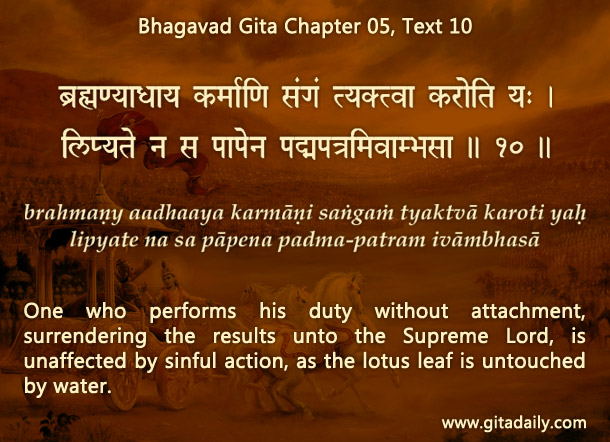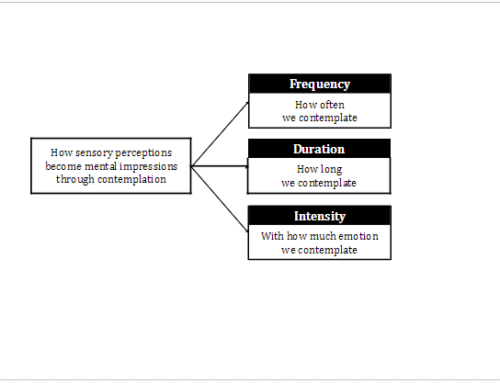Many conventional seekers think of the world only in two terms – action or renunciation, either to act in the world or to renounce it. This was Arjuna’s thinking at the start of the Bhagavad-gita.
For those habituated to such binary thinking, the Gita offers a pleasant third alterative: renunciation in action.
The Gita illustrates this in its fifth chapter (05.10) with the metaphor drawn from nature: enterprising spiritualists stay un-entangled in the material world just as a lotus leaf stays amidst water, but doesn’t get moistened by it. The key here is the non-adhesive quality of the lotus leaf that lets water slide off itself.
While that quality is intrinsic to a lotus, it needs to be cultivated in seekers.
This blend of outer action and inner renunciation is founded on an enlightened exertion of the human capacity to choose. Whereas animals are largely governed by their externals, humans have the evolved consciousness to choose their actions based not just on outer situations but inner motivations.
Those who can best do without matter can do best with it. Doing without matter doesn’t mean renouncing everything material physically but breaking free from emotional dependence on material things. That is, we need to get emotional fulfillment at a non-material level to be able to stay unaffected amidst material things. The best such way is through bhakti-yoga, which grants us emotional fulfillment at the spiritual level in relationship with Krishna. The more we get habituated to seeking and finding devotional fulfillment, the less we need to seek it at the material level – and the better we can use material things effectively for doing justice to our God-given talents, offering our best contributions to others in the service of Krishna and charting a joyous path to Krishna.



Excellent article prabhuji. Thank you.
Hare Krishna!
Brilliant explanation- action with renunciation.
Thank you for sharing your realization